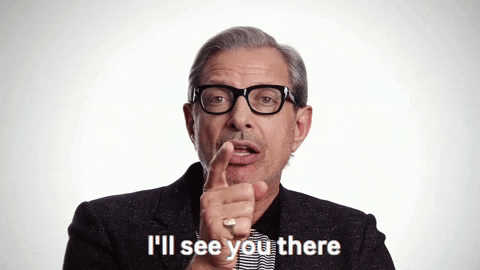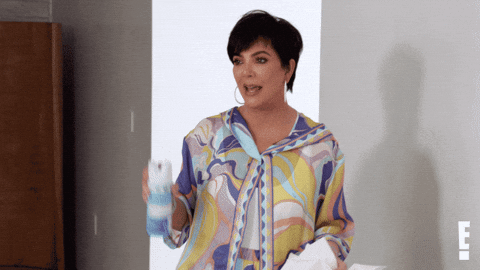Previously on Giuseppe’s Glimpse: In the last episode, we explored how the rise of ad-free subscriptions is quietly reshaping the internet, and what that means for brands trying to earn attention in a crowded and divided digital space. Missed it? Catch up here! ✨
Buongiorno everyone 👋
Let me start with a quick story from 1960 that still matters today.
Marketing professor Theodore Levitt published an article that reshaped how people thought about business. In it, he warned companies about a dangerous trap: defining themselves by what they make, instead of the needs they serve.
He called it marketing myopia. 👓
Today, we’re seeing a similar kind of short-sightedness in the world of customer experience.
Too often, CX gets reduced to a collection of channels and touchpoints, rather than as a system of meaning and value.
Let’s call it customer experience myopia.
It shows up when brands organize experiences around operational logic instead of customer logic. When the goal becomes internal consistency, rather than external significance. When being “everywhere” feels safer than being clear. 🌀
And when that happens, a strategy designed to bring us closer to the customer can end up doing the opposite.
The illusion of omnipresence
One of the clearest signs of customer experience myopia is the rush toward being “omnichannel.”
On paper, it sounds great: be present wherever your customer might show up. Be available, be accessible, be everywhere. 🗺️
But in practice, that mindset often creates more problems than it solves.
Because what looks like good service can actually be a sign of something else: a lack of focus, a fear of missing out, or an internal push to be visible at all costs.
Here’s why the omnichannel promise starts to break down:
It puts presence before purpose.
Just because a channel exists doesn’t mean your customer wants to interact with you there. Relevance beats coverage. 🎯It mistakes quantity for quality.
More touchpoints often mean more friction, not less (especially when they’re siloed or poorly connected). 🧩It avoids making choices.
A real strategy is about deciding where not to be. Omnichannel thinking tries to say yes to everything, and ends up saying nothing clearly. ❌
The result? A customer journey that feels busy but not better. Complex, but not clear.
What we need instead is optichannel: being present where it counts. Fewer channels, more impact.
Not just everywhere, but somewhere on purpose. ✅
Strategy starts with relevance
Just like marketing myopia focused too much on what companies produce, customer experience myopia focuses too much on what companies can deliver and too little on what people actually value.
That’s when things start to slip. You end up with:
Journeys optimized for internal efficiency, not user flow ⚙️
Channel coverage instead of intention-centered design 📡
Satisfaction scores that track ease but not meaning 📉
All the pieces are there, but the whole feels disconnected.
This is what I call Spray & Pray. An experience that’s full of effort but empty of resonance. Built with activity, but lacking emotional payoff.
When every team builds its own touchpoint without a shared direction, the customer journey turns into a maze.
And instead of bringing clarity, the brand becomes harder and harder to follow. 🧐
Becoming followers of our own followers
One of the subtler dangers of customer experience myopia is strategic abdication.
In the name of customer-centricity, companies start reacting instead of leading. They mirror instead of guiding. 🪞
We’ve all seen the pattern: a new platform gains traction, and suddenly every brand rushes to show up there. Not because it fits their story, but because it feels risky not to.
Or a behavior trend pops up, and teams scramble to imitate it, even when it clashes with their identity or offer.
What you are left with are fragmented experiences, diluted identity, and a creeping loss of direction. 🧭
When we follow our customers everywhere, we stop guiding them anywhere.
True customer-centricity isn’t mimicry. It’s leadership.
It means understanding what people need, even when they can’t articulate it, and then designing experiences that meet those needs with clarity and care. 🌟
Clarity is a choice
Escaping customer experience myopia means shifting focus from being present everywhere to being present where it actually matters.
That’s what optichannel strategy is about: choosing your presence with care, based on relevance rather than reach. It’s not a numbers game, but a matter of fit: aligning your channels with what your customers truly need, and with what your brand is genuinely equipped to offer. 🤝
Getting there requires a few things:
Strategic self-discipline to choose fewer, better-aligned touchpoints
Contextual sensitivity to understand how expectations shift across physical, digital, and hybrid spaces 👀
Cultural maturity to align brand experience with operational capacity and brand promise
It’s the same kind of clarity you see in the best luxury brands. 👑 They’re not everywhere, and that’s part of what makes their presence so powerful. Restraint becomes a signal of intent.
Done well, this approach leads to more than just convenience or efficiency. It builds coherence - the feeling that every touchpoint is part of a considered whole, not just an isolated interaction.✨
The power of intentional absence
Customer experience myopia isn’t a tactical glitch. It’s a strategic misalignment, a confusion between motion and direction, between being active and being purposeful.
It happens when companies mistake presence for relevance. When “following the customer” becomes a polite way to avoid making hard, decisive choices. 🚶♀️
In an age of abundance - of content, channels, choices - the true competitive edge lies not in doing more, but in choosing better.
Not in being everywhere, but in creating value in the places that truly matter. 📍
So it’s worth asking:
👉 Are we designing experiences people actually want - or just the ones they expect?
👉 Where could we do less, and matter more?
Stay curious 🙌
-gs
Oh, wow! You made it to the end. Click here to 👉 SHARE this issue with a friend if you found it valuable.









Same myopia you find also in HR management and talent acquisition choices. The difference between a strategy and a policy is your abovesaid "purpose", which may include a part of unpopularity.
In CX not all channels are equal, and cost of service and goods should include also these internal prices - and effectiveness.